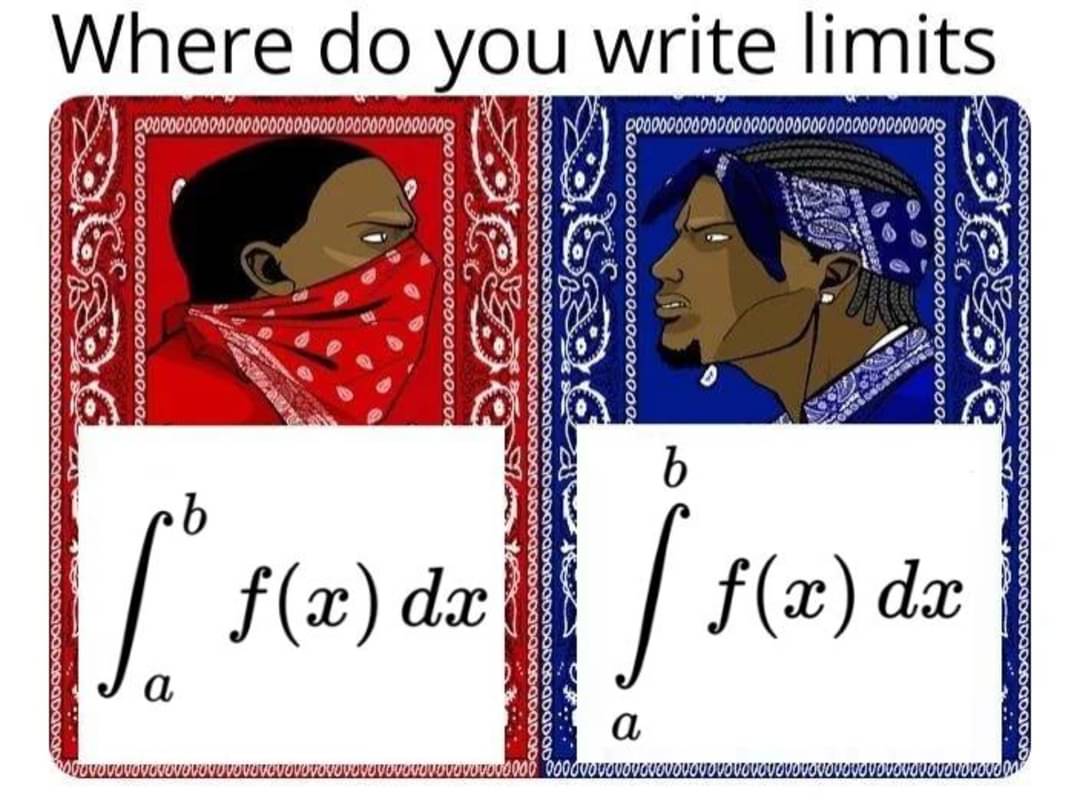Whatever LaTeX does by default
Science Memes
Welcome to c/science_memes @ Mander.xyz!
A place for majestic STEMLORD peacocking, as well as memes about the realities of working in a lab.

Rules
- Don't throw mud. Behave like an intellectual and remember the human.
- Keep it rooted (on topic).
- No spam.
- Infographics welcome, get schooled.
This is a science community. We use the Dawkins definition of meme.
Research Committee
Other Mander Communities
Science and Research
Biology and Life Sciences
- [email protected]
- [email protected]
- [email protected]
- [email protected]
- [email protected]
- [email protected]
- [email protected]
- [email protected]
- [email protected]
- [email protected]
- [email protected]
- [email protected]
- [email protected]
- [email protected]
- [email protected]
- [email protected]
- [email protected]
- [email protected]
- [email protected]
- [email protected]
- [email protected]
- [email protected]
- [email protected]
- [email protected]
- !reptiles and [email protected]
Physical Sciences
- [email protected]
- [email protected]
- [email protected]
- [email protected]
- [email protected]
- [email protected]
- [email protected]
- [email protected]
- [email protected]
Humanities and Social Sciences
Practical and Applied Sciences
- !exercise-and [email protected]
- [email protected]
- !self [email protected]
- [email protected]
- [email protected]
- [email protected]
Memes
Miscellaneous
LaTeX: typically let software decide for me, override if it looks bad.
Paper: Too shit at writing to make a consistent choice
B. A only when there is little space
Same, but there is never enough space
Same. B if I'm feeling fancy, A if I'm trying to fit everything on one line.
Are those called limits in English? How do you call those things then?
lim x->0 1/x
For integrals, we would say that "b and a are the limits of integration".
The notation "lim x->0 1/x" would be read as "the limit of 1 over x as x goes to zero." In general, "lim" is short for "limit" of whatever follows it, with respect to what is below the "lim" symbol. Rarely, I have also seen the notation "l.i.m." used for the limit in mean, i.e. the limit with respect to the L^2 norm.
Also limits. But also "tends towards".
A fits on paper much better than B, especially when you try to write as small as possible to fit all of your work on one line
Better question: Where do you put the dx?
What? Where else would you put it?
Wherever you want it baby
Immediately after the integral symbol, before the integrand, is also common: https://math.stackexchange.com/questions/1146345/notational-position-of-dx-in-integral
It has a nice "operator" look this way.
I would interpret this completely differently than what was intended
Know your limit
Out of these? I'm team Blue.
But really, I'm team Green. b goes more or less in the place Red shows it (or maybe halfway between where Red and Blue show it), but a goes to the left of the integration symbol, mirroring where the b goes relative to the curve at the end of the ∫
Comrade!
The kerning on Latex integrals has always bothered me. The f(x) could move a LOT further to the left!
+ C: I’m so indefinite, I don’t respect limits.
(a, b) at the bottom. It's a 1d integral, so nothing goes after f as well for me.
Best answer, although I work with delta "functions" a lot so I actually have to be careful picking which interval with boundary {a,b} to pick (for example, if I integrated δ(t-a)+δ(t-b) over all t in (a,b), I'd get 0, but if I integrated those deltas over (a,b] I'd get 1, and integrating over [a,b] would give 2).
Also I do have to do integrals with parameters and multiple variables so I can't really leave out the differential.
a sits on the dooblydoo on the left, b hangs from the dooblydoo on the right.
A, B takes too much space
Depends on if I accidentally wrote the function too large
A gang. Does that mean I am old?
ConTeXt has some nice new features: https://www.pragma-ade.com/general/manuals/mathincontext-screen.pdf#page87
Always A. Except when I’m drunk.
If a and b are simply numbers or variables (ex. 1, 2π, x), either, maybe red.
If a or b is a function (ex. (x + y), (1/N), (z - r²)), then blue.
